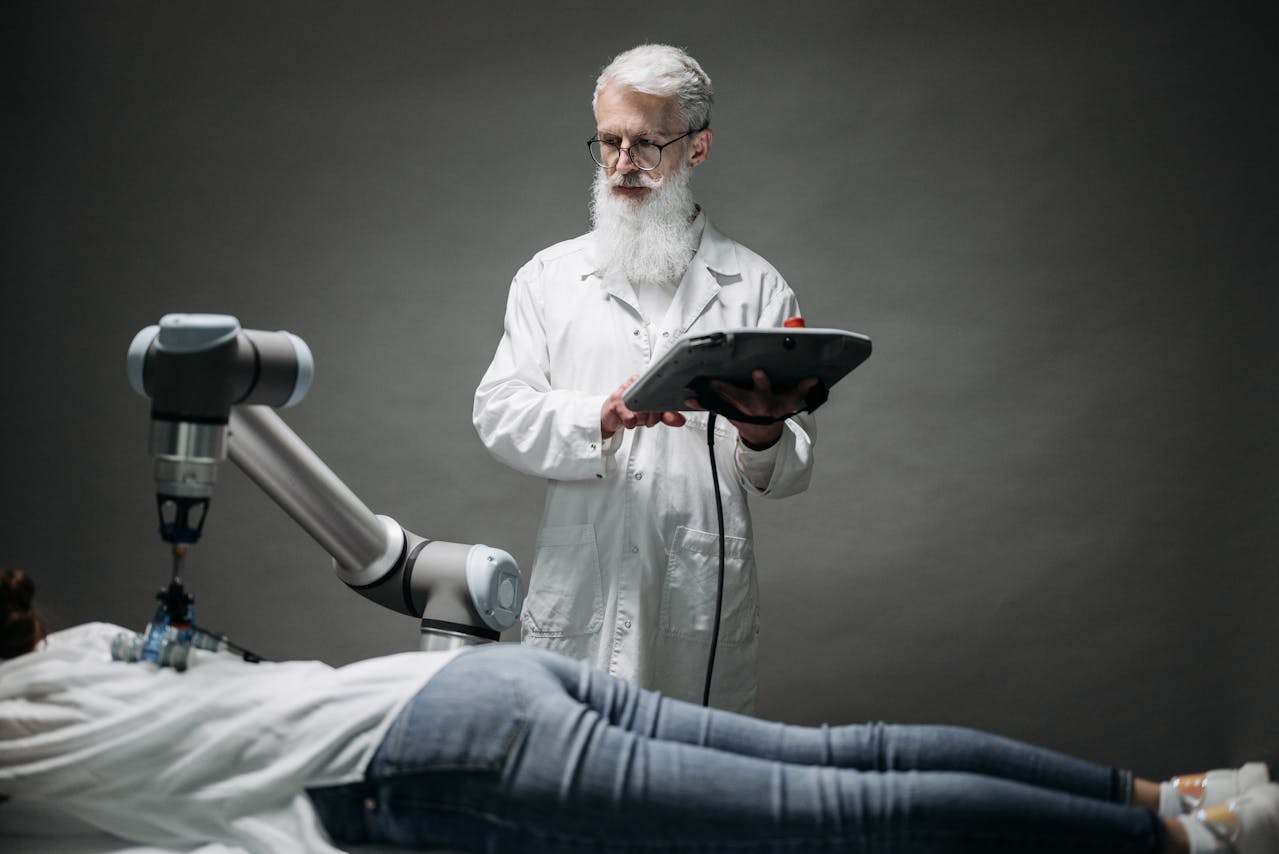Artificial Intelligence (AI) is transforming the workplace at an unprecedented pace, driven by advanced AI agents capable of autonomously handling complex tasks. This shift, often called the “disruption of intelligence,” threatens to eliminate certain jobs while creating new opportunities.
Unlike the industrial revolution, which replaced physical labor, AI challenges human cognitive work, our core strength. This article dives into the jobs most vulnerable to automation, explores emerging roles, and addresses the societal challenges and preparations needed to navigate this seismic shift.
Jobs at Risk: Where AI is Set to Take Over
AI excels at automating repetitive, predictable tasks, particularly those performed on computers. This puts a wide range of occupations at high risk of disappearing within years, if not sooner. The speed and scale of this disruption could outpace previous technological shifts, leaving workers with little time to adapt. Here’s a deeper look at the roles most vulnerable, with real-world examples illustrating the trend:
Routine Jobs: Any job involving repetitive computer tasks is at risk. These roles often follow strict patterns, making them ideal for AI automation. For example, data entry clerks who input customer information into databases are being replaced by AI systems that extract and process data from scanned documents or forms.
Business Process Outsourcing (BPO): Millions of workers in countries like India and the Philippines, employed in call centers or back-office roles, face disruption. These jobs, often outsourced by Western firms, involve tasks like processing invoices or managing customer queries. For instance, a 2023 report already noted that companies like Accenture have integrated AI chatbots to handle routine customer service tasks, reducing the need for human agents in BPO hubs. This threatens livelihoods for workers who relied on these jobs to escape poverty.
Accountants: Routine accounting tasks, such as reconciling accounts, generating financial reports, or detecting discrepancies, are increasingly automated. Tools like QuickBooks and Xero use AI to streamline bookkeeping, while startups like Bench employ AI to handle tax preparation. A 2024 study by McKinsey estimated that up to 30% of current accounting tasks could be automated by 2030, particularly impacting entry-level roles.
Customer Service Agents: AI chatbots are already managing millions of customer interactions monthly. Companies like Zendesk and Salesforce have deployed AI systems that resolve common queries, such as password resets or order tracking, without human intervention. For example, T-Mobile reported in 2024 that its AI-driven virtual assistant handled over 50% of customer inquiries, equivalent to hundreds of full-time positions. This trend is slashing demand for human agents in call centers worldwide.
Graphic Designers and Video Editors: AI tools like Adobe Firefly and Canva’s AI features can generate professional-grade visuals and videos from text prompts. In 2025, a small marketing agency reported replacing two junior graphic designers with MidJourney, an AI tool that creates logos and social media graphics in minutes. Similarly, video editing platforms like Descript use AI to automate tasks like cutting, syncing, and adding effects, reducing the need for entry-level editors.
Anesthesiologists: Even specialized medical roles aren’t immune. AI systems can monitor patient vitals during surgery and adjust anesthesia levels with precision. For example, Stanford University tested an AI system in 2024 that assisted in anesthesia management, allowing one anesthesiologist to oversee multiple procedures simultaneously. This could drastically reduce the number of professionals needed in operating rooms.
The risk is starkly uneven. Jobs requiring only a high school diploma face an 80% chance of automation, compared to 20% for those needing a bachelor’s degree, according to a 2023 Oxford study. Women are disproportionately affected, with 80% in at-risk roles versus just over 50% of men, due to their overrepresentation in administrative and clerical jobs. The rapid pace, potentially transforming entire industries in a few years, draws parallels to the early 20th century, when cars swiftly replaced horses, leaving stable workers jobless.
New Opportunities: The Skills and Roles of Tomorrow
While AI threatens some jobs, it also unlocks exciting possibilities. As routine tasks are automated, human creativity and adaptability take center stage. Emerging roles and skills include:
AI Trainers: Refining AI systems could be a key role, though likely transitional.
Hyper Creators: AI empowers anyone to build software or businesses without coding skills. A teacher, for instance, could launch an ed-tech startup using AI tools.
High Agency Individuals: Those who orchestrate AI agents and start ventures will thrive.
- Problem Solvers with AI: Identifying and solving problems with AI tools will be highly valued.
Proof of Humanity: Authentic human experiences, like live performances, will gain value as AI floods the world with generated content.
Human Connection Roles: Jobs in healthcare and community-building will remain essential.
AI’s accessibility, through natural language platforms, lets small teams or individuals turn ideas into reality with minimal resources. This is the “least competitive moment” for those who embrace AI, offering a rare chance to create wealth and impact.
Challenges Ahead: Inequality and Purpose
The AI revolution brings two major challenges:
Inequality: Those mastering AI, “leveraged individuals”, could become exponentially more productive, earning vastly more than others. This gap could widen if access to AI tools and education isn’t equitable.
A Crisis of Meaning: Work often provides purpose and identity. If AI automates most jobs, Universal Basic Income (UBI) might address financial needs, but humans may struggle to find fulfillment without challenge or contribution.
These issues require policy innovations and cultural shifts to ensure AI’s benefits don’t come at the cost of societal well-being.
Education Must Evolve: Preparing for the Unknown
Education must shift from teaching perishable skills to fostering:
Adaptability: Pivoting as industries change.
Critical Thinking: Making smart decisions in complex scenarios.
Lifelong Learning: Embracing constant skill growth.
AI Literacy: Using AI tools to amplify potential.
Nurturing creativity, judgment, and meaning-making will be key. Human traits like imagination and empathy will remain our greatest assets.
Conclusion: Embracing an Uncertain Future
AI is reshaping work, threatening jobs but also creating new paths. By understanding the risks, seizing opportunities, and rethinking education, we can navigate this transformation. The future is uncertain, but with preparation, we can harness AI to enhance human potential. The time to adapt is now—those who do will shape what’s next.


